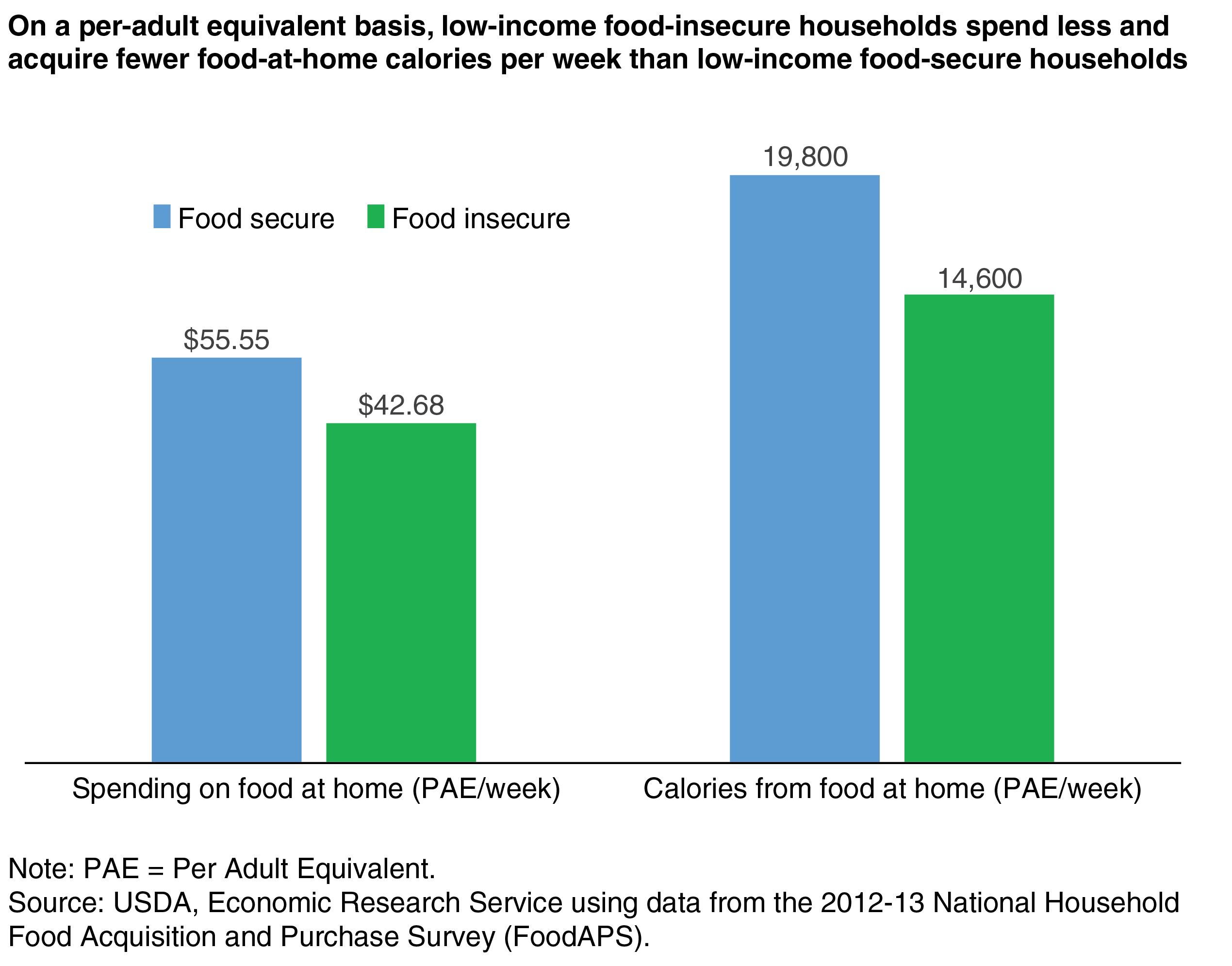
Food-Insecure Households Spend Less and Acquire Less Food Per Week Than Food-Secure Households
- by Christian A. Gregory and Lisa Mancino
- 10/1/2019
Household food insecurity—a lack of access to enough food for all household members to have healthy, active lives—is strongly correlated with a variety of costly, chronic illnesses and conditions in both adults and children. A recent report by ERS researchers made use of the data collected in USDA’s National Household Food Acquisition and Purchase Survey (FoodAPS) to examine differences in food expenditures and calories acquired by two groups of low-income households—food-secure and food-insecure households.
Previous research exploring the relationship between food insecurity and food expenditures has been limited, in part, by data issues. In most national surveys, food security data frequently refer to experiences in the past 12 months, while expenditure data cover the last 30 days. Calorie intake or the amount of food acquired is usually measured 1 or 2 days within a week of the food security survey. When the time periods for food expenditures or food acquisitions do not line up with the food security time period, it is difficult to make meaningful comparisons between food-insecure and food-secure households.
Enter FoodAPS—a joint data collection project of ERS and USDA’s Food and Nutrition Service. These data allow researchers to examine food purchases and foods acquired for free from school cafeterias, food pantries, work-provided meals, and other sources over a week that overlaps with the reference period for food insecurity in the survey—the previous 30 days. FoodAPS respondents record all places where they shopped or acquired foods in a week, including how much they purchased and what they paid for the food.
What the ERS researchers found was striking: Low-income food-insecure households spend almost $13 less per adult equivalent per week on food at home, and they acquired 5,170 fewer calories per adult equivalent per week from purchased and free at-home foods than low-income food-secure households. (Because family sizes and compositions differ, researchers converted household spending and acquired calories to per adult equivalents to standardize expenditures and calories. Low-income is defined as a household income below 130 percent of poverty.)
To put this in perspective, a low-income food-insecure household with two adults, one male child and one female child, would spend $45 per week less on food at home than a low-income food-secure household with the same family composition. This same food-insecure household would have acquired 18,100 fewer calories at home per week than the food-secure household. That is equivalent to about 4 days’ consumption for a male and female adult.
This article is drawn from:
- Gregory, C.A., Mancino, L. & Coleman-Jensen, A. (2019). Food Security and Food Purchase Quality Among Low-Income Households: Findings From the National Household Food Acquisition and Purchase Survey (FoodAPS). U.S. Department of Agriculture, Economic Research Service. ERR-269.


